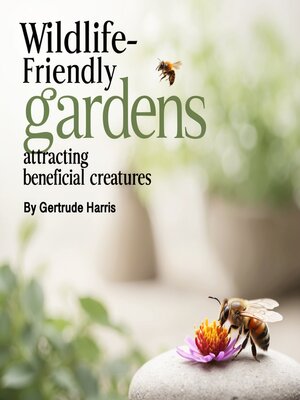Wildlife-Friendly Gardens
audiobook (Unabridged) ∣ Attracting Beneficial Creatures
By Gertrude Harris

Sign up to save your library
With an OverDrive account, you can save your favorite libraries for at-a-glance information about availability. Find out more about OverDrive accounts.
Find this title in Libby, the library reading app by OverDrive.



Search for a digital library with this title
Title found at these libraries:
| Library Name | Distance |
|---|---|
| Loading... |
This audiobook is narrated by a digital voice.
In an age of expanding cities and shrinking wild spaces, our gardens have become more important than ever. These patches of green—whether sprawling backyards, cozy courtyards, or even balcony planters—have the potential to support an incredible variety of life. A wildlife-friendly garden isn't just a beautiful retreat for us; it's a sanctuary for the birds, insects, mammals, and other creatures that are essential to the health of our environment.
Wildlife plays a vital role in maintaining the balance of nature. Birds help control pests. Pollinators like bees and butterflies are responsible for the reproduction of countless plant species, including many of the fruits and vegetables we eat. Frogs and hedgehogs keep slug populations in check, while bats quietly go about reducing mosquitoes at dusk. When we invite these creatures into our gardens, we're not only creating a dynamic and lively outdoor space—we're taking part in a much larger ecological process.
Unfortunately, modern landscaping practices often work against these natural allies. Lawns that are regularly mowed and treated with chemicals offer little in the way of food or shelter. Ornamental plants, especially non-natives, may look appealing but can lack the nectar, seeds, or nesting material wildlife depend on. By contrast, a thoughtfully designed wildlife-friendly garden embraces diversity, encourages natural processes, and shifts the focus from strict control to thoughtful collaboration with nature.
The good news is that transforming any garden into a wildlife haven doesn't require a complete overhaul. Simple, intentional choices—planting native species, adding a water source, leaving a pile of brush or logs in a corner—can have a profound impact. Every garden, no matter how small, has the potential to become a stepping stone in the fragmented landscape, offering food, shelter, and breeding space for creatures who might otherwise struggle to survive.







